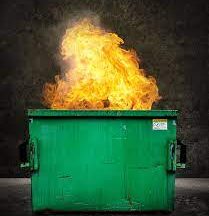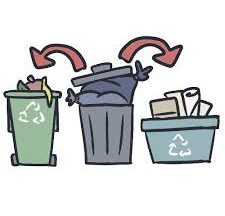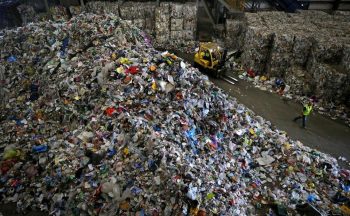 January 2023
January 2023
Recycling has been a lie. The belief is that most of the plastic packaging we clean and separate, deposit in the blue box or recycling bin, and gets picked up by a waste collection truck gets turned into something new.
This fiction makes us feel good.
High-rise communities have heavily invested in this fiction. Tri-sorters for segregating recycled items, dumpsters and waste bins for storing recycling, and staffing to sort and manage requires time and money. Residents rinsing out containers before depositing in recycling is a wasted resource. Communities support the system because they believe in recycling. An added incentive is “free” pick up of waste by the city. Knowledge that the system is ineffective makes it harder for communities to trust that any future system is deserving of support.
The vast majority of plastic packaging in Canada never gets recycled. Most of it ends up in landfills or burned for fuel. Only an estimated 12 percent is sent for recycling. Even less is turned into something new.
Plastic bottles and rigid plastics are more easily recycled than most other plastics, and have a greater chance of being turned into something new. Only about two percent of the film bags and plastics used for packaged meat are recycled. Plastic from the blue box and other sources are overflowing landfill, leaking into the environment, blocking waterways and getting stuck in trees. Nobody knows what to do with the growing volume of plastics entering the recycling program.
Consumers have done their part to facilitate recycling because it is good for the environment. They have trusted that government has been doing their part. We now know that government has not only failed in their role but spends lavishly to maintain the façade.
Some items are effectively recycled – paper, glass and metal containers despite the impediment of 240 municipalities each creating their own rules. These rules should not differ when one is at home, work, or just out for the day.
One of the problems is that the blue box collects less paper than in the past, and much more plastic. Plastic is more complicated to recycle, costs more and has fewer buyers. In 2020, municipalities that once sold their recycling were now paying to have their plastics picked up and disposed of. While Toronto claims that 67 percent of the plastics they collect from blue bins is recycled, we were actually shipping these items to China. The actual number is probably closer to two percent. Today, China no longer accepts imports of scrap plastic so we are likely burning what was once shipped overseas to be burned.
The problem of single-use plastics, which are inexpensive and versatile, will not disappear until a more effective solution exists.
A More Streamlined System
The current system requires each municipality to run its own blue box program and pay half the costs. The other half is paid for by manufacturers, retailers, franchise holders and other companies – collectively known as “product stewards” – that introduce packaged products to the marketplace. Next summer, a new system is to come into force for Toronto. The system will be set up and paid for by the stewards. In place of the current hodgepodge of rules, every household and individual in Ontario will be dealing with a single set of rules. Recycling systems should become more efficient and economical with everyone operating under this single set of rules.
Recycling can be effective and our success with paper proves this. All efforts to recycle plastic have failed making it reasonable to assume that plastic recycling does not work. Pretending that it does work has been ineffective and costly. Deluding ourselves that it can be recycled, at considerable cost in time and money, is no solution.
Some believe the solution is for manufacturers to reduce their use of plastic for packaging, with or without government legislation, and that there should be fewer single-use plastics on the market by 2030 including all types of single-use plastic food serving products and those ubiquitous water bottles. We should be using more real dishes and washing them between uses. Food services should be making greater use of reusable dishware.
Beyond this, expectations are that the federal government will continue to ban the use of single-use plastics, and will eventually legislate use of recycled product in new plastics. The combination of these initiatives will likely increase product costs while moving closer to a balance between plastic used by consumers and its being recycled.
 Without a solution, Ontario is expected to run out of landfill space by 2032. With other countries unwilling to take our plastic trash, the stakes are high if no solution is found.
Without a solution, Ontario is expected to run out of landfill space by 2032. With other countries unwilling to take our plastic trash, the stakes are high if no solution is found.







